Step 2 of the site-level federal fleet ZEV Ready process is to review zero-emission vehicle (ZEV) and electric vehicle supply equipment (EVSE) training materials.
Navigate the ZEV Ready Process
Return to the ZEV Ready Center to see all 15 steps.
Primary Audiences
 | Agency Headquarters Fleet Managers |
 | Site ZEV Champions |
 | Site Location Fleet Managers |
 | Facility Infrastructure Managers |
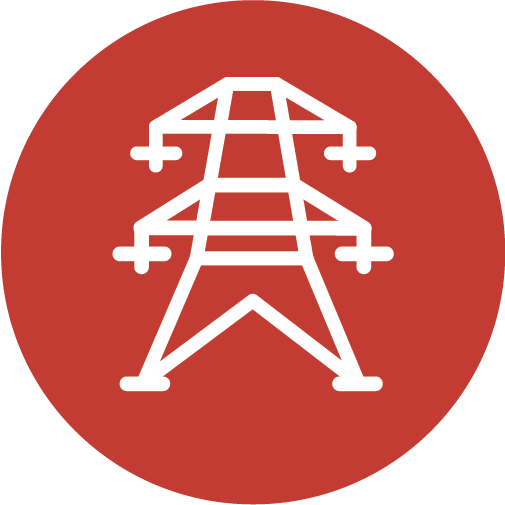 | Facility Energy Managers |
 | Vehicle Operators |
The primary audiences for this process step consist of all key fleet stakeholders, including the agency headquarters fleet managers, site ZEV champions, site location fleet managers, facility infrastructure managers, facility energy managers, and vehicle operators.
The site ZEV champion is responsible for identifying, coordinating, and engaging with the key fleet stakeholders, and ensuring they complete the ZEV and EVSE training specific to their roles and responsibilities.
Overview: Review ZEV and EVSE Training Materials
One key component in defining and implementing an agency fleet ZEV Ready strategy is ensuring that all key stakeholders are familiar and comfortable with ZEVs and their supporting charging infrastructure. The site ZEV champion is responsible for coordinating the education and training of the key fleet stakeholders. This web page provides an overview of the different types of ZEVs and EVSE (or charging stations), how ZEVs can benefit your fleet, and recommended training materials for each type of fleet stakeholder.
Recommended Federal Fleet Training Materials
FEMP and GSA have developed online resources to help fleet stakeholders gain familiarity with ZEVs and EVSE. The training materials listed in the tables below can help stakeholders develop the requisite technical knowledge to implement their roles and responsibilities, including an overview of ZEVs and EVSE, evaluating EV opportunities, financial considerations of acquiring ZEVs and associated EVSE, installation planning, workplace charging program design, and vehicle cybersecurity awareness. These publicly available training materials are available at the links below. Have your key fleet electrification stakeholders complete the Required Trainings to obtain ZEV Ready designation for your site.
Required Trainings for ZEV Ready Designation | |||||||||
|---|---|---|---|---|---|---|---|---|---|
| Training | Format | Recommended ZEV Stakeholders | Duration | Subject Area and Level | |||||
| FEMP EV Technology Overview | Video |  |  |  |  |  |  | 12 minutes | EV and EVSE (Beginner) |
| FEMP EV Financial Considerations | Video |  |  |  | 9 minutes | Financial (Beginner) | |||
| FEMP Electric Vehicle Supply Equipment Infrastructure | Video |  |  |  |  |  | 8 minutes | EVSE and Facility (Beginner) | |
| FEMP Driving Electric Vehicles | Video |  |  |  |  | 4 minutes | EV (Beginner) | ||
Recommended ZEV Materials and Trainings | |||||||||
|---|---|---|---|---|---|---|---|---|---|
| Training | Format | Recommended ZEV Stakeholders | Duration | Subject Area and Level | |||||
| EVSE Tiger Team Report: Army Site Assessments | Report |  |  |  |  | ~45 minutes | EVSE and Facility (Intermediate) | ||
| Federal Workplace Charging Program Guide | Report |  |  |  |  |  | ~45 minutes | Program and Financial (Intermediate) | |
| Workplace Charging Fee Calculator | Calculator |  |  |  | ~10 minutes | Program and Financial (Intermediate) | |||
| Vehicle Cybersecurity Threats and Mitigation Techniques Report | Report |  |  |  |  | ~45 minutes | EV and EVSE (Advanced) | ||
| Future GSA Fleet Workshop Trainings | Website |  |  |  |  | ~60 minutes | Various | ||
| ZPAC Training Series | Video |  |  |  | 45 minutes | EV and EVSE (Intermediate) | |||
Types of ZEVs
ZEVs are vehicles that can produce zero tailpipe exhaust emissions of any criteria pollutant (or precursor pollutant) when operating. This definition includes electric vehicles (EVs), which include battery electric vehicles (BEVs) and plug-in hybrid electric vehicles (PHEVs), as well as fuel cell electric vehicles (FCEVs).
ZEVs include EVs, which are defined as a "plug-in electric drive vehicle" in Section 131 of the Energy Independence and Security Act of 2007 (EISA), to mean a vehicle that: (A) draws motive power from a battery with a capacity of at least 4 kilowatt-hours; and (B) can be recharged from an external source of electricity for motive power (42 U.S.C. § 17011). EVs are further defined as follows:
Battery Electric Vehicles
Battery electric vehicles (BEVs) or "all electric vehicles" are powered primarily by an electric motor drawing current from rechargeable batteries or other portable sources of electrical current (about 150-500 miles in 2023 models). BEVs are most suitable in cases where vehicles drive less than 200 miles per day. As explored in more detail in Step 15: Support Drivers in Operating ZEVs and Using EVSE, real-world driving range is more sensitive to ambient temperatures, ranging from 120% of rated range at 70ºF to 50% at -2ºF.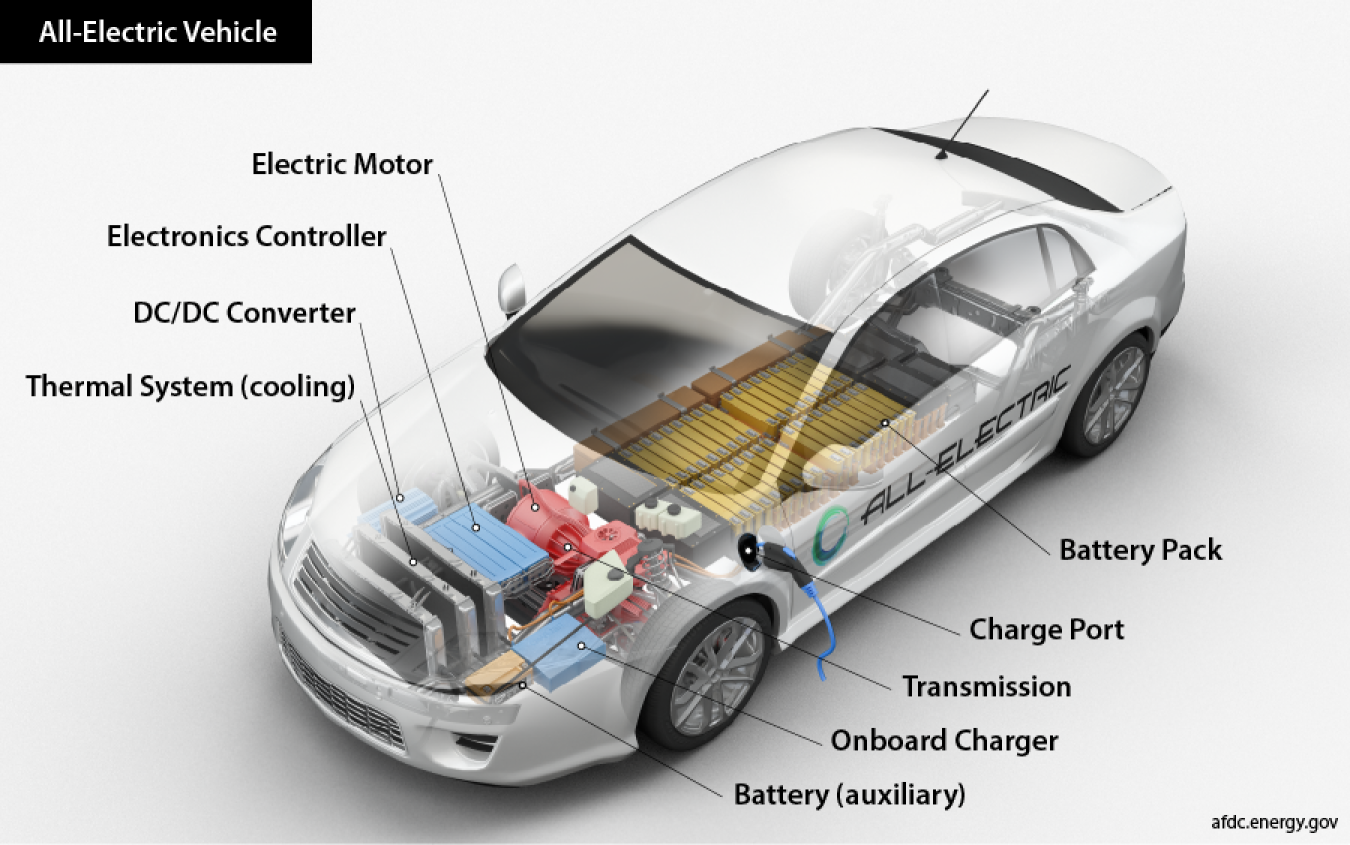
Low-Speed Electric Vehicles
Low-speed electric vehicles (LSEVs) are electric-powered low-speed vehicles and are also referred to as neighborhood electric vehicles (NEVs). LSEVs are four-wheeled vehicles weighing less than 3,000 pounds with top speeds of 20 to 25 mph. LSEVs are used on slower traffic roads (less than 45 mph) such as local distributor streets and have successful use cases on campuses settings.Plug-In Hybrid Electric Vehicles
Plug-in hybrid electric vehicles (PHEVs) are propelled by both an internal combustion and heat engine and to a significant extent by an electric motor that draws electricity from a battery (with a capacity of at least 4 kilowatt-hours) that can be recharged from the grid. This makes it possible to drive moderate distances using just electricity (about 15 to 60-plus miles in 2023 models), commonly referred to as the "electric range" of the vehicle.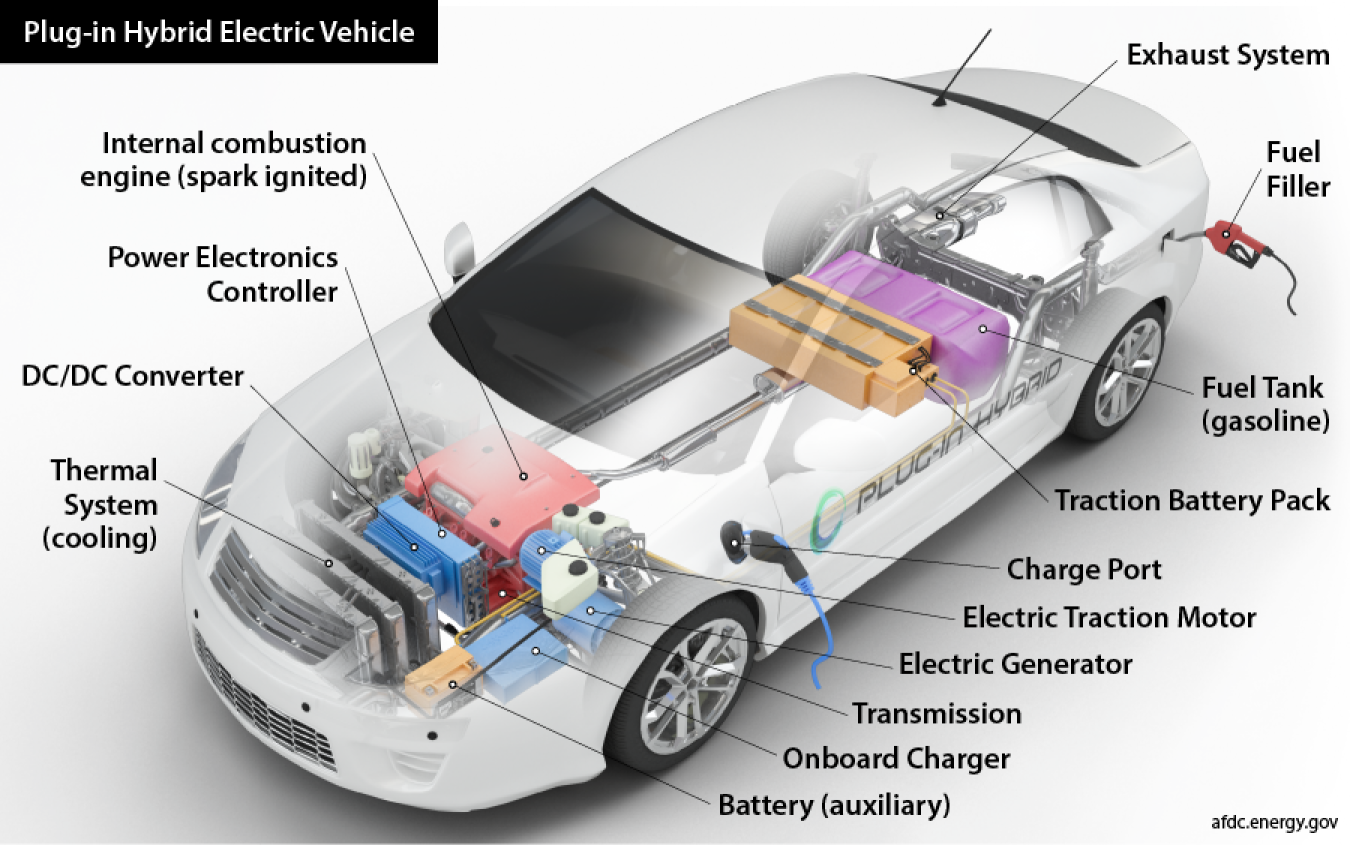
The other type of ZEV is an FCEV, which is propelled by an electric motor using power derived from one or more cells that combine oxygen with hydrogen fuel stored on board the vehicle to generate electricity (as defined in section 30B(b)(3) of the Internal Revenue Code of 1986 as amended by EPAct 2005 (26 U.S.C. 30B(b)(3))).
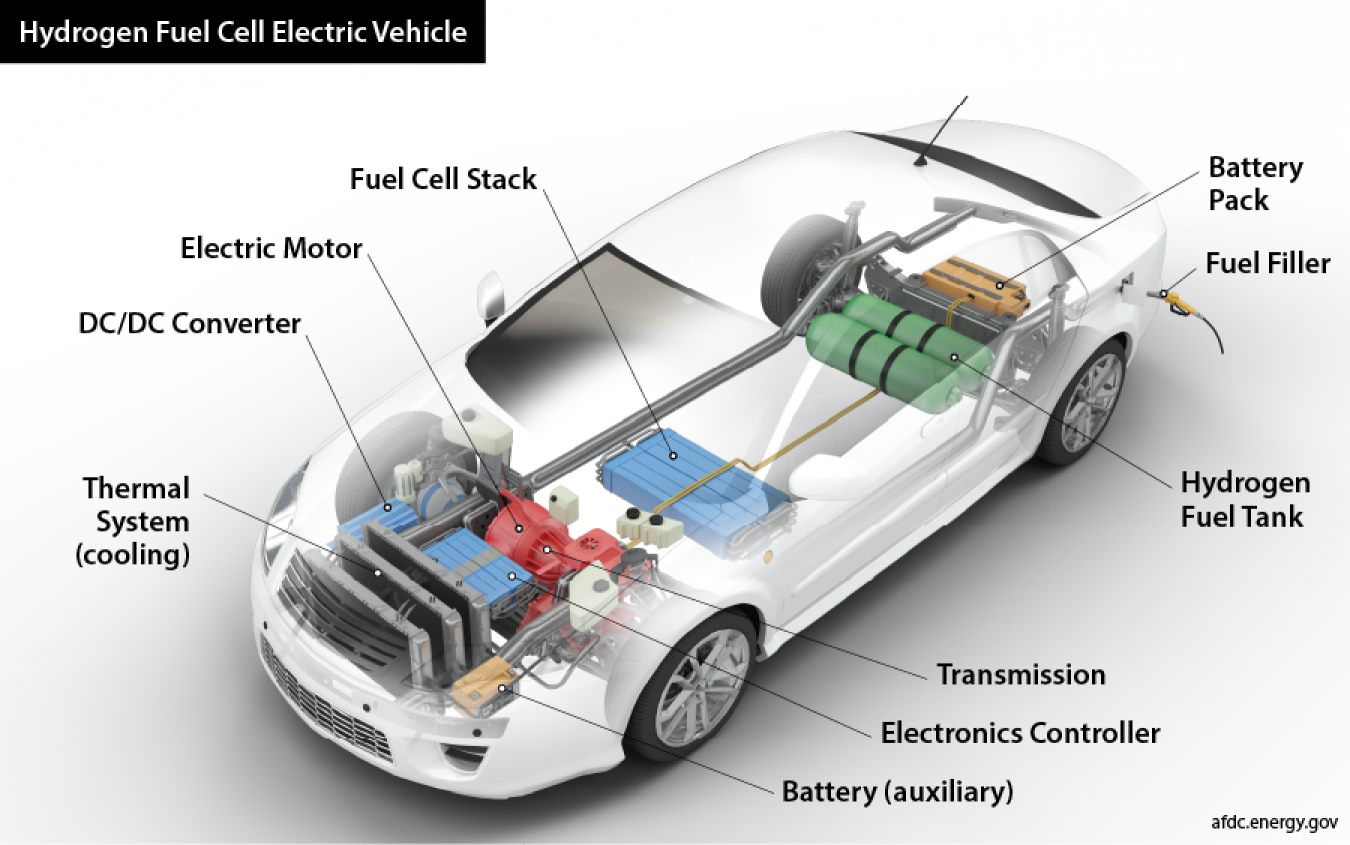
Although they draw propulsion energy from both an internal combustion engine and an electric motor that draws electricity from a battery, these vehicles cannot plug in to off-board sources of electricity to charge the battery. Instead, the vehicle recovers energy from regenerative braking and the internal combustion engine to charge the battery.
Electric Vehicle Charging Infrastructure
All BEVs, PHEVs, and LSEVs are "fueled" with electricity by plugging into an electric vehicle charging station—also referred to as EVSE—powered from the grid or directly from a generation source. The type of charging infrastructure varies based on the type of EV and charging characteristics (frequency, length, etc.). Typically, the primary EVSE for refueling EVs should be located at the fleet facility where the vehicle is garaged. Additional EVSE may be available locally at commercial or other federal fleet locations.
EVSE ensures the safe transfer of electricity between the power source (transmission or generation) and the EV. EVSE is only one component of an EV charging system. The two other components are the power source to deliver electricity to the EVSE and the EV itself to control charging of the vehicle batteries from the EVSE.
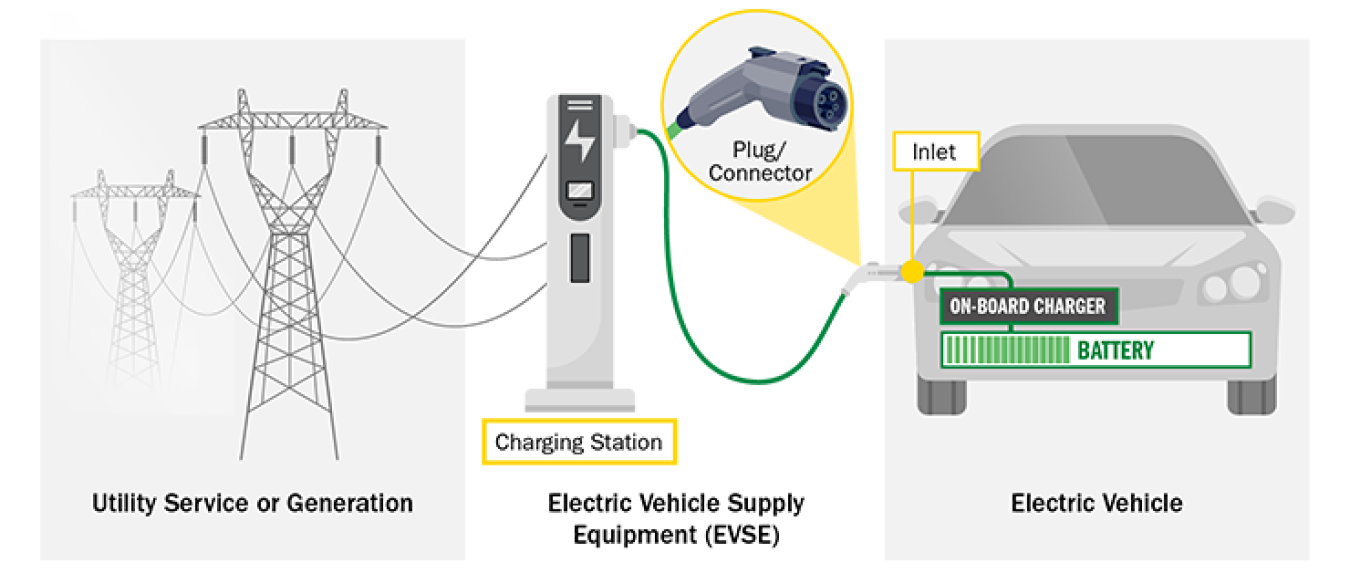
Power Source
Typically, power is delivered to the electric vehicle charging station through the grid (transmission) or from an on-site power source (e.g., renewable generation). This electricity is properly managed through transformers, switchboards, and load centers. The power source should be connected to the EVSE through a dedicated circuit correctly sized to the power requirements.EVSE
The EVSE is a set of components that link the power source to the vehicle: (1) the interface to the power source or unit, (2) the cord, and (3) connector to the vehicle. The connector, once inserted into the EV inlet, creates an electrical connection for charging the batteries and communicating charging-related information.Electric Vehicle
Once the EV inlet and EVSE are coupled, power is delivered via an onboard charging system to the batteries.EVSE charging speeds are generally delineated by SAE International standard J1772 as alternating current (AC) Level 1, AC Level 2, direct current (DC) fast chargers (DCFC or DC Level 1), and extreme fast chargers (XFC or DC Level 2).
AC Level 1 EVSE units are often portable charging cords that come with new EVs and can plug directly into 120-V wall outlets on dedicated circuits. The typical charging power for Level 1 EVSE is 1.4 kW.
AC Level 2 EVSE units are typically hardwired, standalone stations that charge about five times as quickly using 208 or 240 VAC single phase at 32 A. They are often installed in fleet and publicly available parking lots. The typical charging power for Level 2 EVSE is 7.2 kW.
DC Fast Chargers (DCFC and XFC) can provide power much more quickly and are typically installed a “gas station” type operation for public use. Typical DCFC EVSE provides up to 50 kW of power, and XFC EVSE up to 150 kW.
The table below illustrates the amount of driving range charged per hour for a Chrysler Pacifica and a Ford Mach-E for each EVSE type. The Pacifica PHEV can fully recharge its 32-mile range in about 11 hours with a Level 1 EVSE and 2 hours with a Level 2 EVSE. Like most PHEVs, the Pacifica PHEV is not capable of using DCFC and XFC. The base model 2022 Mach-E BEV can fully recharge its 230-mile range in under 10 hours with a Level 2 EVSE, in roughly 1.4 hours with DCFC EVSE, and in 30 minutes using XFC EVSE.
Example BEV and PHEV Charging Times by EVSE Type
MY 2023 Electric Vehicle All Electric Range (miles) Level 1 Recharge Time (hours) Level 2 Recharge Time (hours) DC FAST (50-kW Recharge Time (hours) Extreme DC FAST (150-kW)
Recharge Time (hours)Recharge Range per Hour of Charging 2–5 mi/hr 10–20 mi/hr 100–150 mi/hr 400–450 mi/hr Battery Electric Vehicles Nissan Leaf (base) 149 mi 30+ hrs 7.5 hrs 1 hr Chevy Bolt 259 mi 65 hrs 7 hrs 1.6 hrs Ford F150 Lightning 230–320 mi 72 hrs 10–14 hrs 2 hrs 0.7 hrs Ford Mustang Mach-E 224–300 mi 95+ hrs 14 hrs 1.5 hrs 0.7 hrs Hyundai Kona 258 mi 50 hrs 9.5 hrs 1.5 hrs Plug-In Hybrid Electric Vehicles Ford Escape PHEV 37 mi 10 hrs 3.3 hrs Jeep Wrangler PHEV 22 mi 12 hrs 2.4 hrs Chrysler Pacifica PHEV 32 mi 14 hrs 2 hrs *DC Fast Charger (DCFC) and Extreme DC Fast Charger (XFC) example charging powers are maximum rate and not generally consistent throughout the charging cycle. Most DCFC and XFC ramp down power considerably at 80% state of charge to protect from battery overheating. While most EVSE units are connected to the local power distribution system, another option is to place portable charging stations on site which can stand alone without a grid connection. Instead of a grid connection, these portable EVSE units typically have a solar PV array, a battery storage system, and Level 2 charging ports. These portable chargers are typically a skid-mounted solution that can be moved with a trailer to areas of high demand, require no trenching or concrete work, and are not impacted by power distribution system outages.
How ZEVs Can Benefit Your Fleet
ZEVs can provide many potential benefits for your fleet, including sustainability, cost savings, and performance benefits.
Sustainability Benefits
ZEVs are effective at reducing vehicle fleet emissions by displacing less efficiently burning petroleum with more efficient electricity. The use of electricity in ZEVs reduces emissions per mile, with the amount of reduction dependent on the type of electricity generation. Electricity from renewable sources does not generate greenhouse gas emissions, and the use of hydrogen in FCEVs provides large emission reductions depending on the source of the hydrogen.
Tailpipe Emission Benefits
BEVs and PHEVs running on only electricity have zero tailpipe emissions. They generate no direct emission of criteria pollutants or other pollutants.
Operating Cost Savings
Although EVs may have higher up-front acquisition costs, their operating costs are lower than similar conventionally fueled vehicles. Electricity is less expensive than conventional fuels on a per mile basis, and electric vehicles are cheaper to maintain.
Reducing Petroleum Use
ZEVs are effective at displacing petroleum use with a readily available domestic energy source. Each mile driven by an electric vehicle on all-electric mode reduces petroleum use.
Performance Benefits
Electric vehicles have instantaneous power, are fast, quiet, and have excellent weight balance for handling.
| Phase | ZEV Ready | Step | Actions |
|---|---|---|---|
| PLANNING |  Team Ready | 2. Review ZEV and EVSE training materials | ✔ The site ZEV champion and the key fleet stakeholders should complete the required FEMP and GSA ZEV and EVSE trainings in the training matrix by identified role and responsibility. This provides a starting point for identified key fleet stakeholders to learn new skills by roles and responsibilities and to understand their role in the ZEV Ready planning process. ✔ Key fleet stakeholders review the recommended FEMP and GSA ZEV and EVSE trainings in the training matrix by identified role and responsibility. These trainings are designed to provide a more thorough understanding of fleet electrification planning, design, and operations and maintenance. |
Previous Step
Go back to Step 1: Identify and Coordinate Team.


